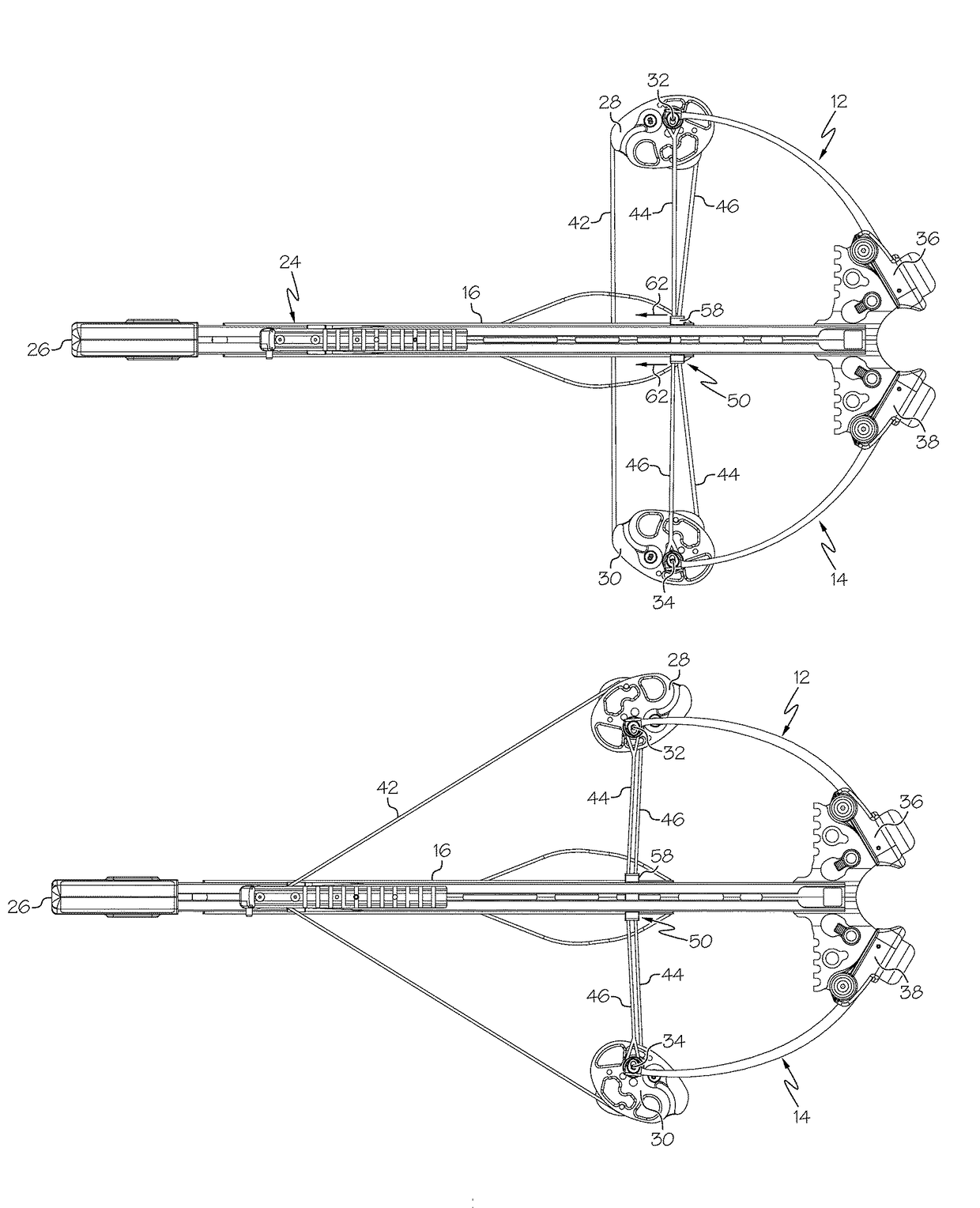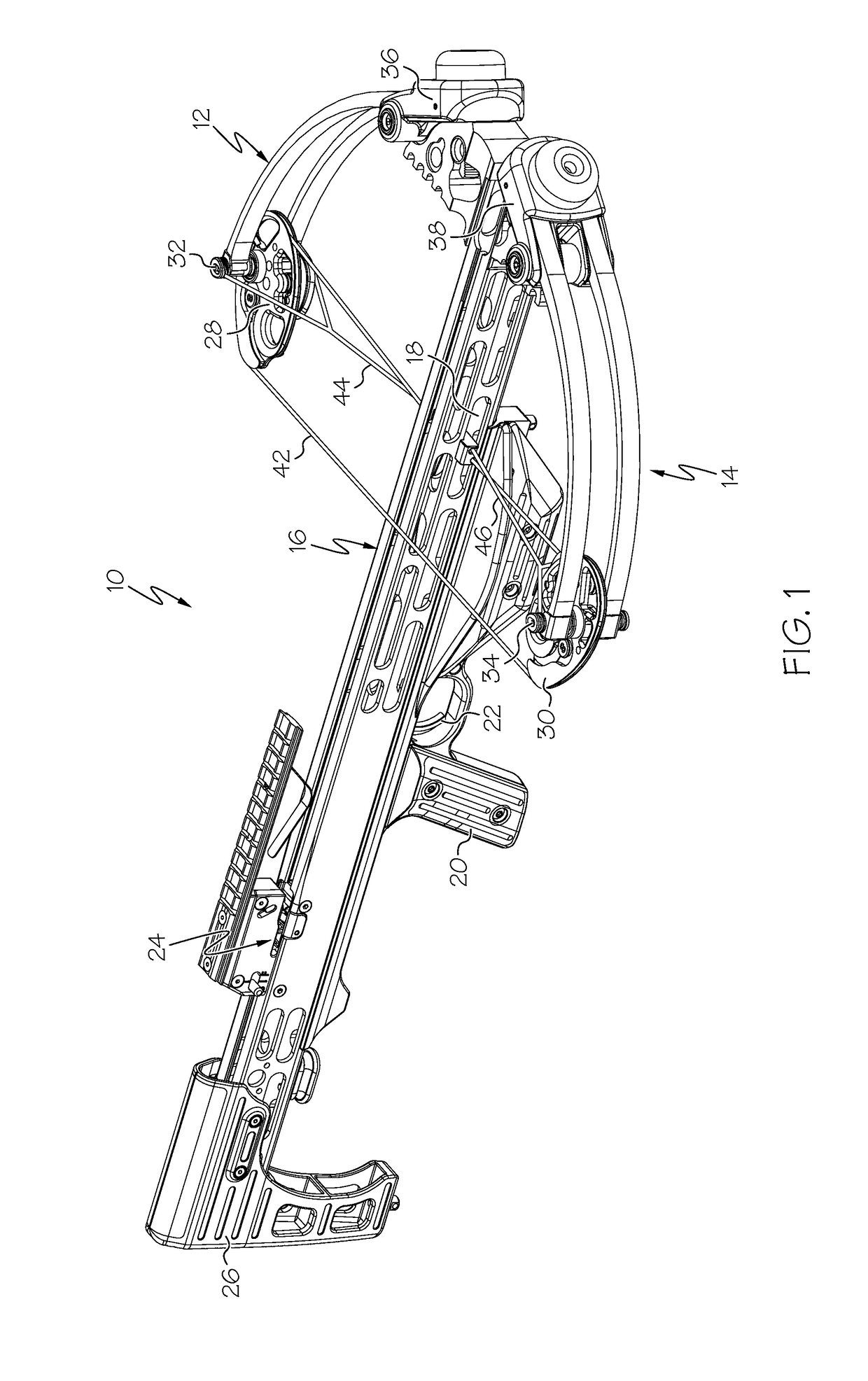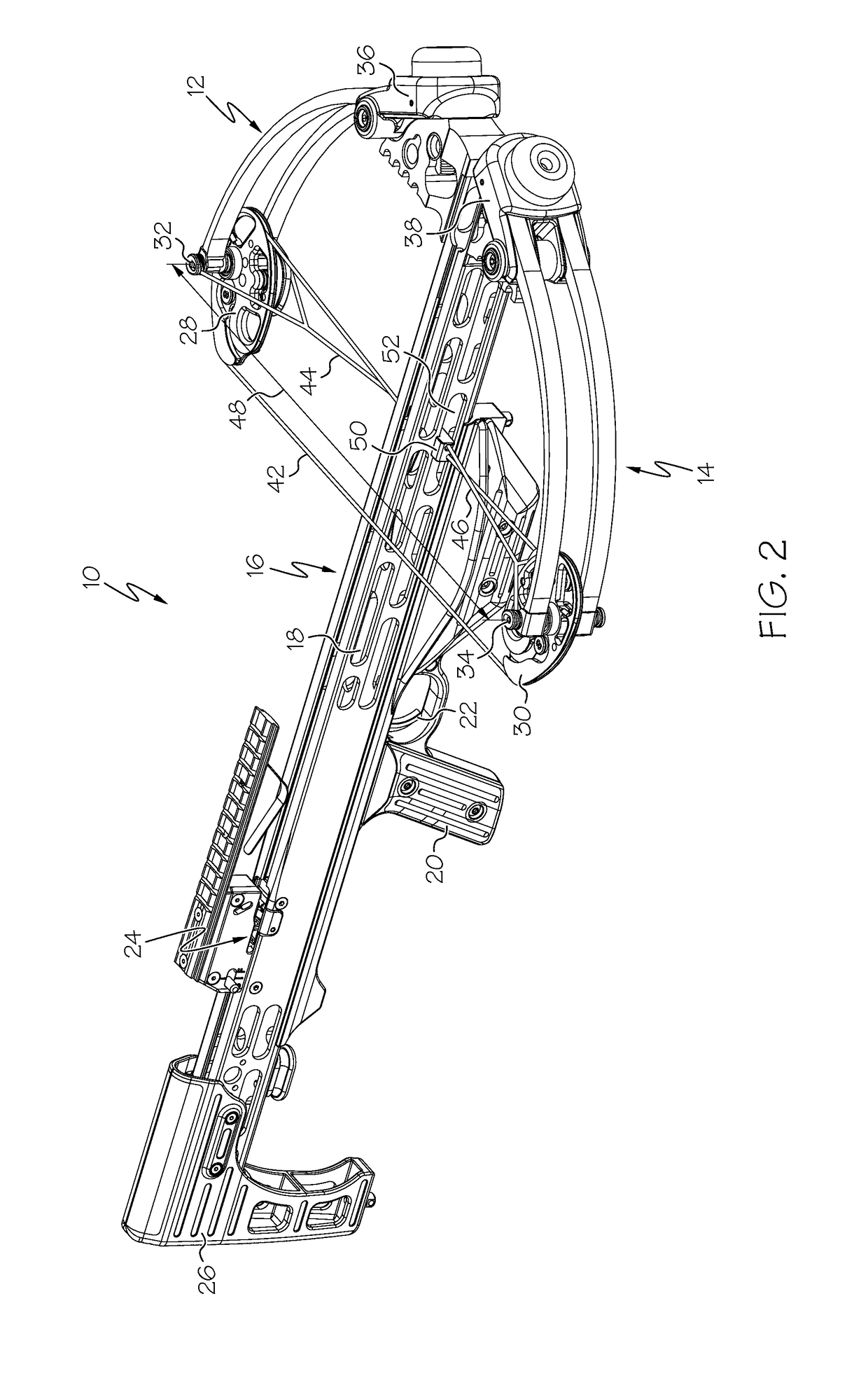High let-off crossbow
a crossbow and high-letting technology, applied in bows/crossbows, white arms/cold weapons, weapons, etc., can solve the problems of reducing the overall minimizing the crossbow power stroke and simultaneously and reducing the overall length of the crossbow. , to achieve the effect of reducing the overall width dimension, and reducing the overall length dimension
- Summary
- Abstract
- Description
- Claims
- Application Information
AI Technical Summary
Benefits of technology
Problems solved by technology
Method used
Image
Examples
Embodiment Construction
[0047]While this invention may be embodied in many different forms, there are described in detail herein specific embodiments of the invention. This description is an exemplification of the principles of the invention and is not intended to limit the invention to the particular embodiments illustrated.
[0048]For the purposes of this disclosure, like reference numerals in the figures shall refer to like features unless otherwise indicated.
[0049]In at least one embodiment as depicted in FIG. 1 a crossbow is generally designated by reference numeral 10. “Crossbow” as used herein is intended to encompass any suitable type of compound crossbow, including single cam crossbows, CPS crossbows and / or cam-and-a-half crossbows, dual cam 1.5 / hybrid / ICPS cam, binary cam and / or twin cam crossbows. The crossbow 10 includes limbs 12 and 14. Limbs 12 and 14 are mounted to a stock 16 which may include channel openings 18. A grip 20 is also mounted to the stock 16, and a trigger assembly 22 is position...
PUM
 Login to view more
Login to view more Abstract
Description
Claims
Application Information
 Login to view more
Login to view more - R&D Engineer
- R&D Manager
- IP Professional
- Industry Leading Data Capabilities
- Powerful AI technology
- Patent DNA Extraction
Browse by: Latest US Patents, China's latest patents, Technical Efficacy Thesaurus, Application Domain, Technology Topic.
© 2024 PatSnap. All rights reserved.Legal|Privacy policy|Modern Slavery Act Transparency Statement|Sitemap



